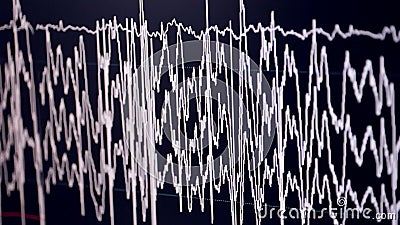

PSVT occurs because of a short circuit - an abnormal electrical pathway made of heart cells - that allows electricity to speed around in a circle and repeat the signal over and over. What happens during PSVT?Ī normal heartbeat begins with an electrical impulse from the sinus nod e, a small area in the heart's right atrium (upper chamber). This results in a regular but rapid heartbeat that starts and stops abruptly. It occurs when a short circuit rhythm develops in the upper chamber of the heart. 50 (9): 2657–2660.Paroxysmal supraventricular tachycardia (PSVT) is a type of abnormal heart rhythm, or arrhythmia. "Weaning of Veno-venous Bypass in Liver Transplantation: A Single Center Experience". "Insertion and management of percutaneous veno-venous bypass cannula for liver transplantation: a reference for transplant anesthesiologists: Percutaneous veno-venous bypass in liver transplantation". Sakai, Tetsuro Gligor, Silviu Diulus, John McAffee, Richard Wallis Marsh, J."Veno-venous bypass versus none for liver transplantation". Gurusamy, Kurinchi Selvan Koti, Rahul Pamecha, Viniyendra Davidson, Brian R ().Liver transplant, Liver resection, nephrectomy for RCC with extension into the IVC, other surgery requiring extended duration of caval obstruction Low flow should be brought to the attention of the surgeons, if flow can not be increased the bypass should be discontinued. Persistent presence of air in the right atrium should prompt immediate cessation of flow through the bypass circuit and examination for points of air entry.įlow through the system should be monitored, when flow drops to low levels (threshold vary by institution but on the order of 400 cc per minute) the risk of thrombosis increases. A more sensitive means of detection is trans esophageal echo cardiography. A small leak is typically not obvious to the naked eye, but may be detected by making a high point in the tubing after the heat exchanged where air can accumulate. A small steam of bubbles will pass through the pump and accumulate in the right heart and pulmonary artery. Rather air embolism is caused by slow aspiration most commonly from cracks, or partially open fittings. Invasive arterial pressure monitoring is imperative to demonstrate adequacy of venous return and cardiac output.Īir embolism is not caused by circuit disconnection and sudden aspiration of large volumes of air, the centrifugal pump will seize and stop flow once air enters the pump head. Total flow is typically on the order of 2 to 4 liters per minute.Īlternatively percutaneous canulas may be placed by anesthesia, but this is not common. To adequately decompress the portal system an additional one liter per minute of additional flow should accompany the addition of portal inflow. It is important to quantify the flow from the femoral system and the additional flow from the portal system. Once stable flow is established the portal system drainage is added to the circuit. Initiation of bypass flow is sequential, initially inflow from the femoral is opened and bypass is initiated. High flow, heparin bonding and the absence of an oxygenator obviate the need for systemic heparinization during VVB. Blood aspirated from these two canulas flows through the circuit to a centrifugal pump and through a heat exchanger finally re-entering the circulation above the caval obstruction via a canula placed into the subclavian vein or the internal jugular vein. A second inflow canula is placed into the portal system, either the portal vein or one of the mesenteric veins. One canula is placed in the greater saphenous vein with its tip extending to the external iliac vein. Inflow catheters are typically placed by the surgeons via cutdown. The bypass circuit consists of a heparin bonded tubing, a centrifugal pump, and a heat exchanger.

Advances in surgical technique particularly, piggyback implantation with partial occlusion of the ICV, have reduced the dependence on VVB at many centers in the United States. Historically this technique provided an alternative route of venous return during liver transplant. Occlusion of the inferior vena cava at the level of the diaphragm reduces venous return to the right atrium by up to 60%.


 0 kommentar(er)
0 kommentar(er)
